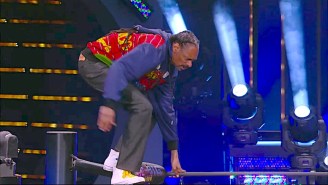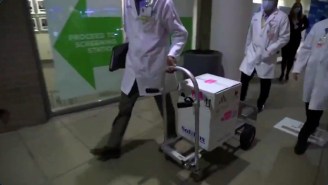Former ECW mainstays and tag team partners Axl Rotten and Balls Mahoney both passed away this year. Back in February, Rotten (real name Brian Knighton) died of an accidental heroin overdose. In April, Mahoney (real name Jonathan Rechner) passed away after a heart attack. It’s no secret that “The Hardcore Chair Swingin’ Freaks” took a tremendous number of unprotected chair shots and other weapons blows over the years, as they both made their names almost exclusively via hardcore wrestling.
Now, the Boston Globe is reporting that both Mahoney and Rotten have been diagnosed by doctors as having had CTE when they died. Rechner had CTE, while Rotten showed “early stages” of the disease. Mahoney becomes just the third pro wrestler to have been diagnosed with CTE (although Perry Saturn has just gone on record as suffering from traumatic brain injury). The Globe reports this is the first CTE diagnosis for a pro wrestler since 2009, when Andrew “Test” Martin was diagnosed by Dr. Bennet Omalu, the subject of the film Concussion.
WWE spokesman Brian Flinn said by e-mail that the company would decline to comment until it has reviewed the research on the diagnoses. He suggested that Konstantine Kyros, a Hingham lawyer who represents more than 60 professional wrestlers, was “pushing’’ the CTE story to counter negative publicity about the WWE’s court motions to sanction him for improper conduct — an allegation Kyros denied.
Obviously, the topic of traumatic brain injury has been a hot-button one not just for professional wrestling, but for all major sports. Pro wrestling (and largely WWE) is probably second only to the NFL in being faced with scrutiny about CTE and other brain injuries, dating back to the Chris Benoit murder-suicide and Benoit’s subsequent diagnosis of CTE (which for the moment can only be definitively diagnosed posthumously). WWE has been the subject of several lawsuits from former employees trying to seek damages for being improperly informed about the dangers of head trauma.
WWE has very notably made significant strides to make their wrestlers safer and healthier over the past decade, with chairshots to the head being eliminated and an emphasis placed on concussion testing and recovery periods. Still, these diagnoses are a grim reminder that there are still a great many wrestlers out there who performed (and may still perform) in more reckless situations.






